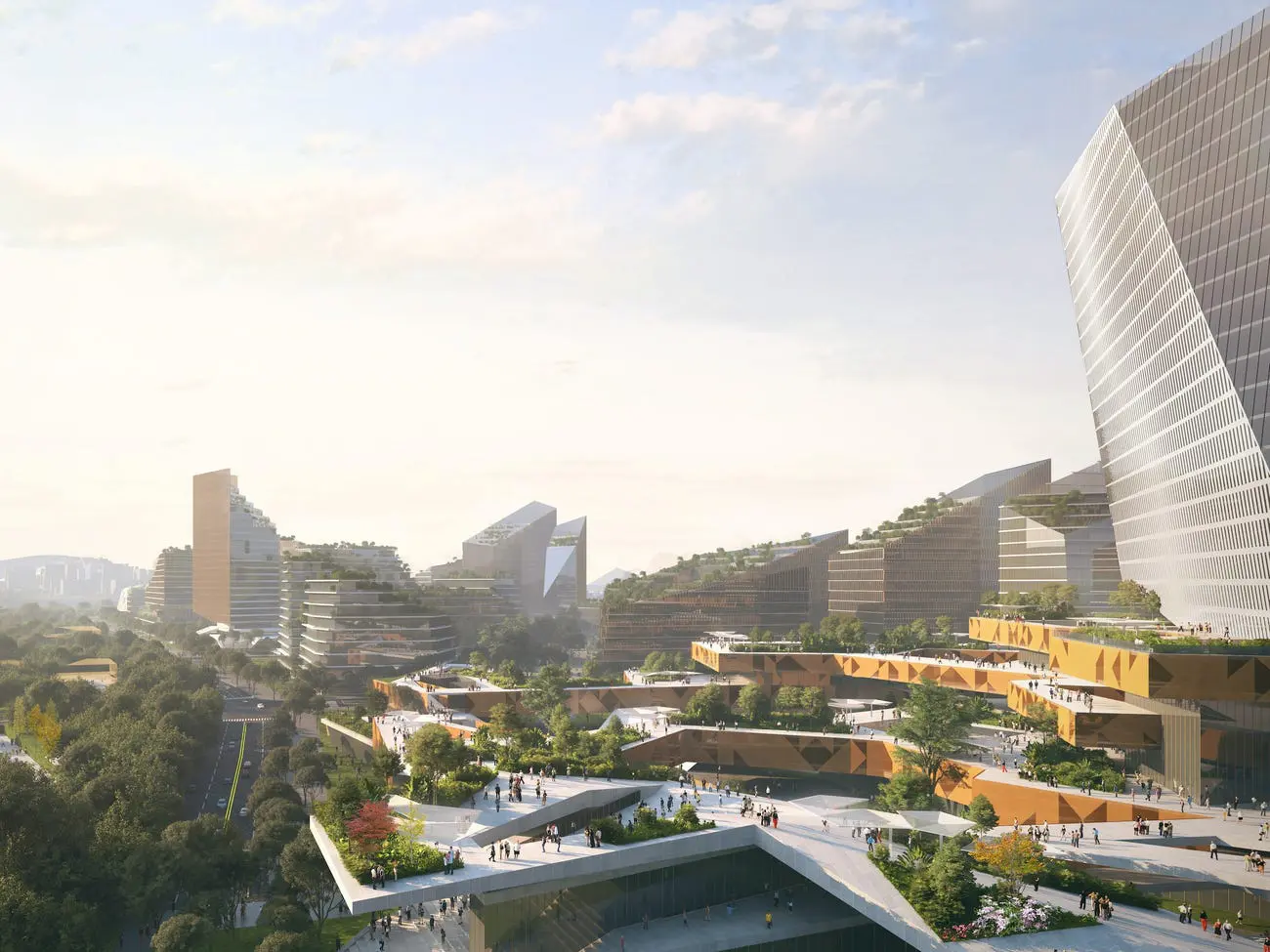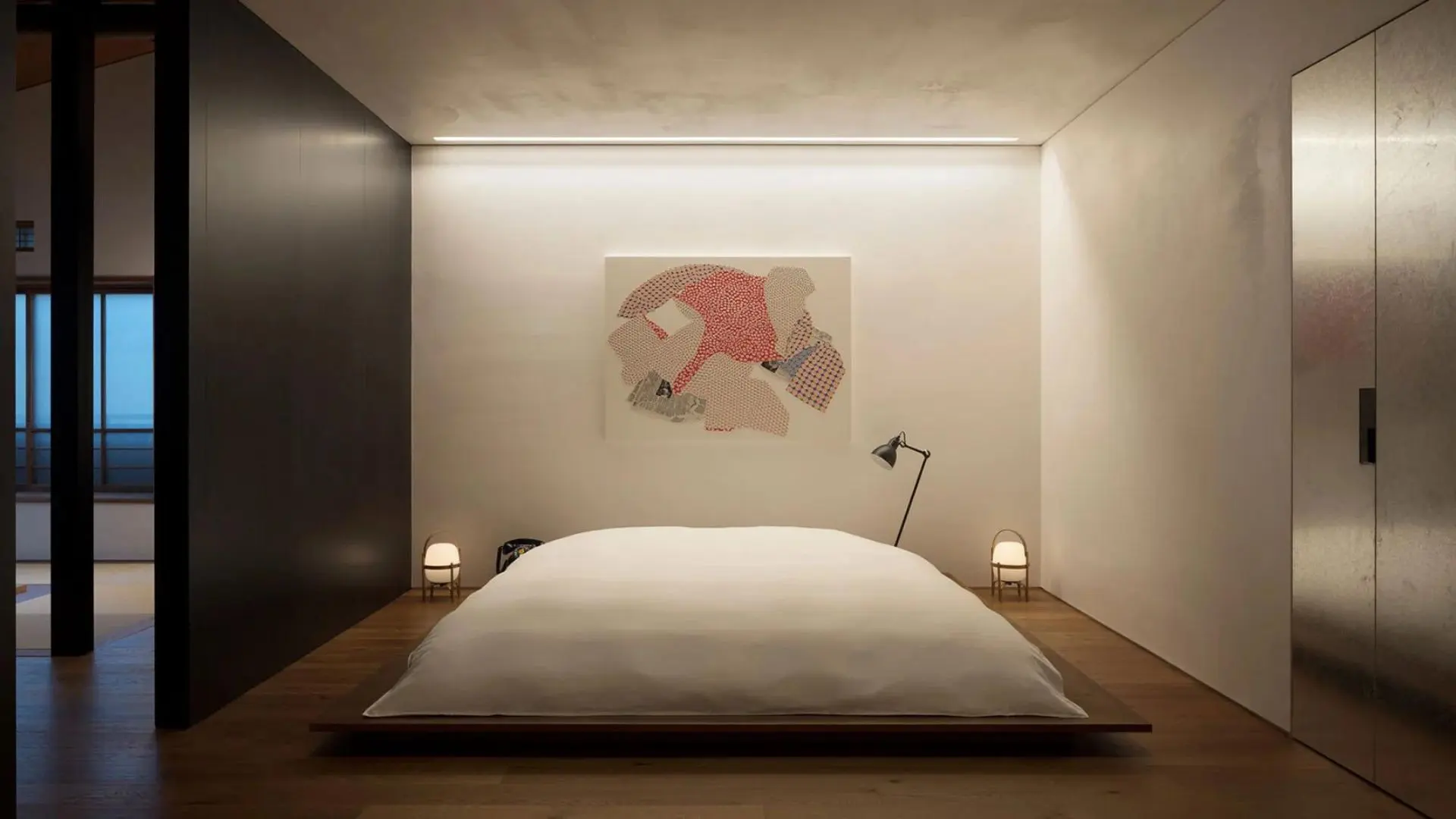Net City: a giant ‘city of the future’ to redefine Smart City Construction
NBBJ has unveiled plans for a car-free city roughly the size of Midtown Manhattan in the Chinese metropolis of Shenzhen.

The city, which is being developed by Chinese technology company Tencent, will feature corporate offices, a school, apartments, sports facilities, parks and retail space. Located on a peninsula alongside the Dachan Bay shipping-container terminal, NBBJ envisions Net City becoming a blueprint for sustainable cities of the future.

The minds behind Villa Chams – NBBJ
NBBJ is an American architecture, planning and design firm founded in 1943 by Seattle-based architects Floyd Naramore, William J. Bain, Clifton Brady, and Perry Johanson. Initially called Naramore, Bain, Brady & Johanson, it changed its name in 1976 after merging with Columbus, Ohio-based Godwin, Nitschke, Bohm and today has offices in Beijing, Boston, Columbus, Hong Kong, London, Los Angeles, New York, Portland, Pune, San Francisco, Seattle, and Shanghai.
A self-described ‘network of renaissance teams’, NBBJ is made up of more than 800 researchers, strategists, nurses, architects, planners and interior designers. The firm has completed projects both in and outside of America with some of its better known collaborations including Amazon’s Seattle HQ Bubble Greenhouses and Samsung’s futuristic Silicon Valley headquarters. In recent years NBBJ has highlighted its green credentials, committing to carbon neutrality by 2030 as part of the Architecture 2030 challenge, a global initiative encouraging architects to reduce their fossil-fuel emissions.

Materials & Techniques – A sustainable, human-focused approach
Whilst the exact urban plan is unknown, immediately noticeable is the amount of public space envisioned within Net City. With ample greenery, NBBJ has replaced the grid system used by cars in traditional neighbourhoods with public amenities that reflect the human-focused approach to the project.
Relying on pedestrian walkways, in addition to a subway network, residents, commuters and visitors will instead be encouraged to travel by foot or by bicycle. Meanwhile, ferries will provide public transport on waterways. Properties within Net City are being conceived to maximize shade and minimize energy use. In addition to this, solar panels on the rooftops of and rainwater collectors will offer Net City a more sustainable infrastructure, whilst sensors will be used to track flood risks, and mangrove trees will be planted at the shorelines’ edge to create a natural defence.

Style & Aesthetics – Green-topped terraced buildings
Net City looks like a futuristic district, in part due to its terraced buildings that vary throughout the development. Ranging in height from small single-floor buildings to 30-floor high-rises, they border a large greenery-filled area at the center of the project. Greenery is everywhere, from the lower-level gardens, groves and parks to grass-covered rooftops and multi-level terraces.

The journey towards ‘Midtown Manhattan’
When Net City is complete, the area will be about the size of midtown Manhattan and should be able to accommodate up to 80,000 residents and workers. Construction is set to begin on phase one later this year with all three phases expected to be completed by 2027. The first phase will include the construction of apartments, offices and a transit hub.
Design Memento – Tech giant property developers…
Tencent’s master-plan city project is reflective of a trend that sees tech companies taking on large sprawling campuses where employees live, work and play. Apple’s Silicon Valley headquarters, completed in 2017, covers 173-acres and includes a fitness center, research labs, public areas and 9,000 trees, in addition to office space. The company has also committed $400 million to affordable housing projects across California.
Meanwhile, Google’s 18.6-acre Charleston East complex, currently being built near its Google’s famed headquarters in Mountain View, California, features gardens, beach volleyball courts and bicycle pathways. Google has also committed over $100 million to affordable housing in the Bay Area.

The writer’s opinion comment – it’s great timing for a project like this
Net City offers a positive model for China post-coronavirus because it responds to urgent needs in light of the pandemic. As the bubbles we live in have shrunk, the need for restorative indoor-outdoor spaces that promote both physical and mental health has grown. Covid-19 has highlighted ways in which cities, towns and public spaces could be designed for the better and Net City responds with its positive use of sustainable technologies, natural defences and green spaces.











